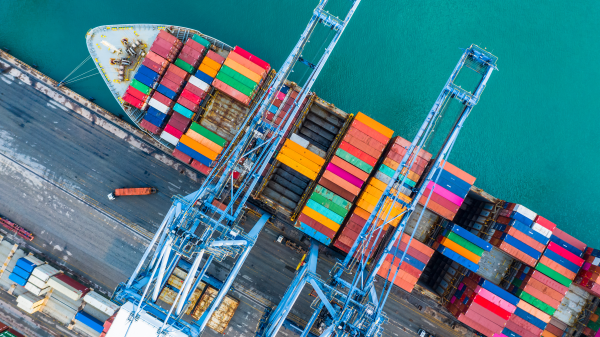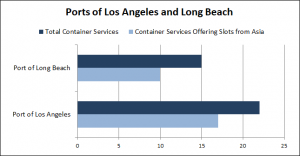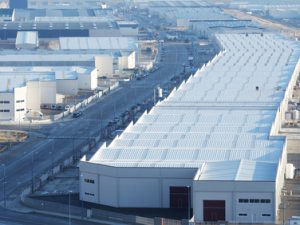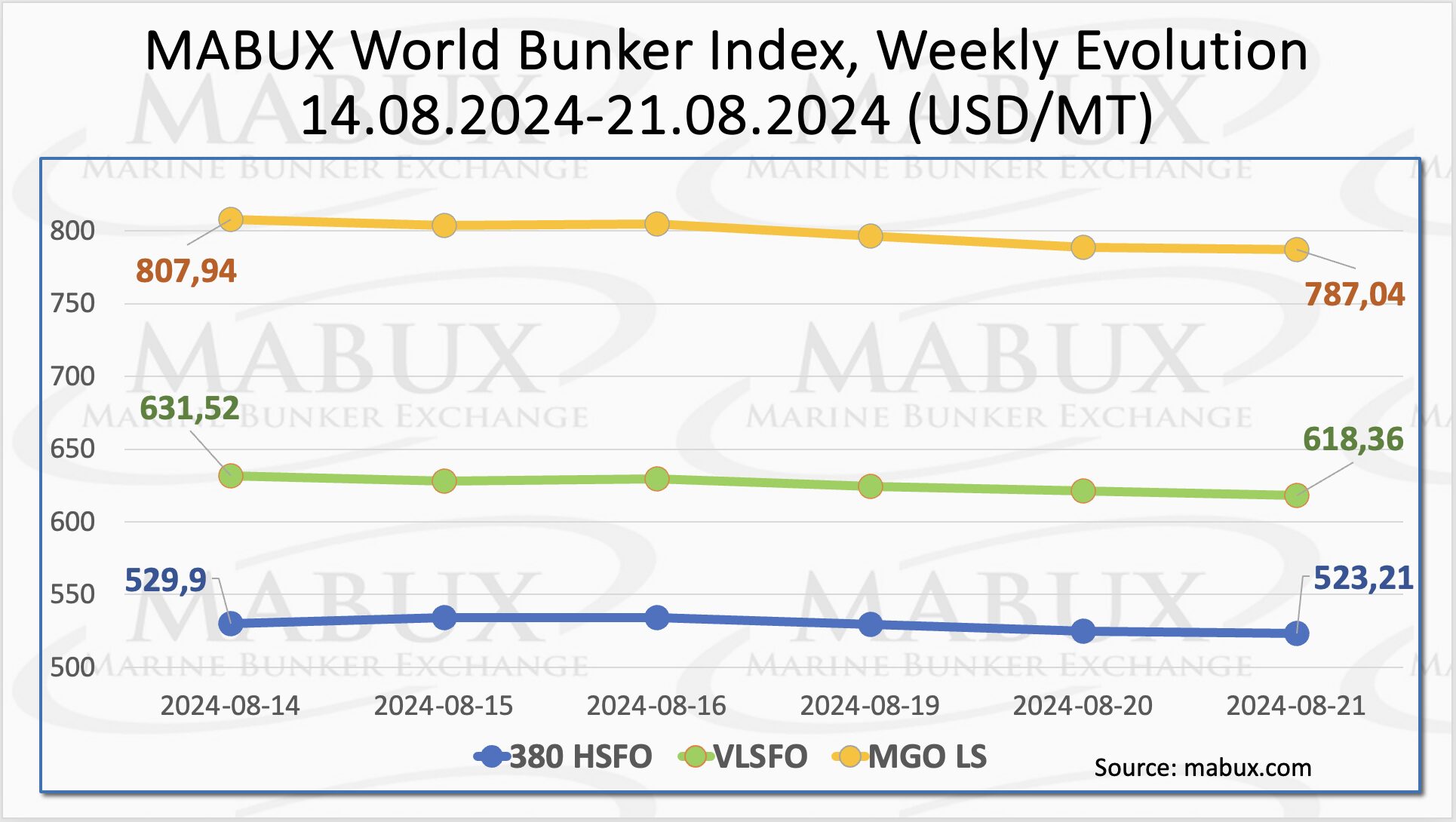

Port congestion remains a lingering issue for the ports of Los Angeles and Long Beach as imports from Asia continue to remain strong.
Looking at just a snapshot of the port congestion in the San Pedro Bay area, between 8:00 a.m.-12:00 p.m. Pacific Standard Time Wednesday, 17 containerships were at anchor around the ports of Los Angeles and Long Beach, while 30 were moored at either of the ports, according to MarineTraffic AIS data provided to BlueWater Reporting.

Phillip Sanfield, Director of Media Relations at the Port of Los Angeles, told BlueWater Reporting Thursday that there is a record amount of one-way cargo coming from Asia into the U.S. At the Port of Los Angeles, he said that terminals are operating at extremely high utilization rates, there are challenges with chassis and rail cars, warehouses are either filled or mostly filled, and the pandemic is resulting in warehouse workers needing to be more separated, thus exacerbating the congestion problem.
Luckily, the Port of Los Angeles is ready and able to provide a vaccine site for dockworkers as soon as the port gets authority to do so and the vaccine becomes more widely available, he explained.
Being that there is a record amount of one-way cargo shipments coming from Asia into the U.S. and the ports of Los Angeles and Long Beach are both heavily reliant on imports from Asia, it’s no wonder why congestion has been an issue at these ports.
Data gathered from BlueWater Reporting’s Port Dashboard tool shows that the Port of Long Beach is called by 15 container services, 10 of which offer slots from Asia, while the Port of Los Angeles is called by 22 container services, 17 of which offer slots from Asia, as illustrated in the chart above.
Source: Hailey Desormeaux, Bluewater Reporting
Follow on Twitter:
[tfws username=”BWReporting” height=”700″ width=”350″ theme=”light” color=”#FAB81E” tweets=”2″ header=”yes” footer=”yes” borders=”yes” scrollbar=”yes” background=”yes”]













